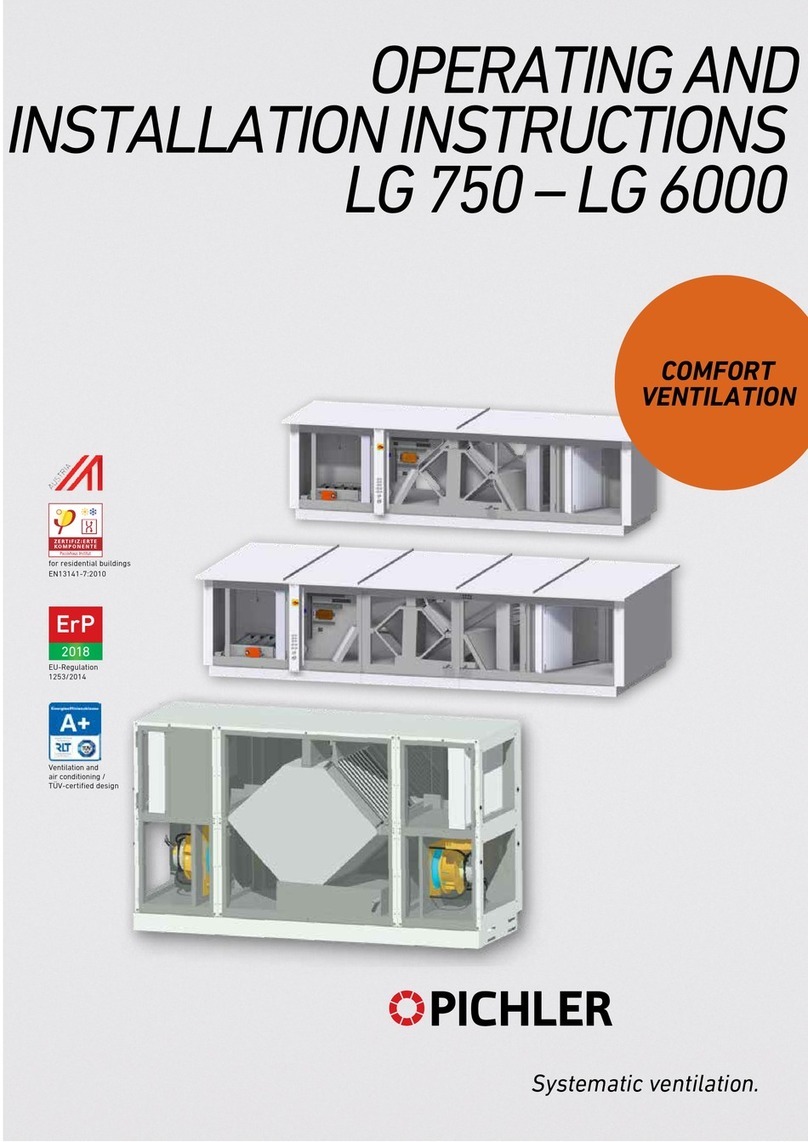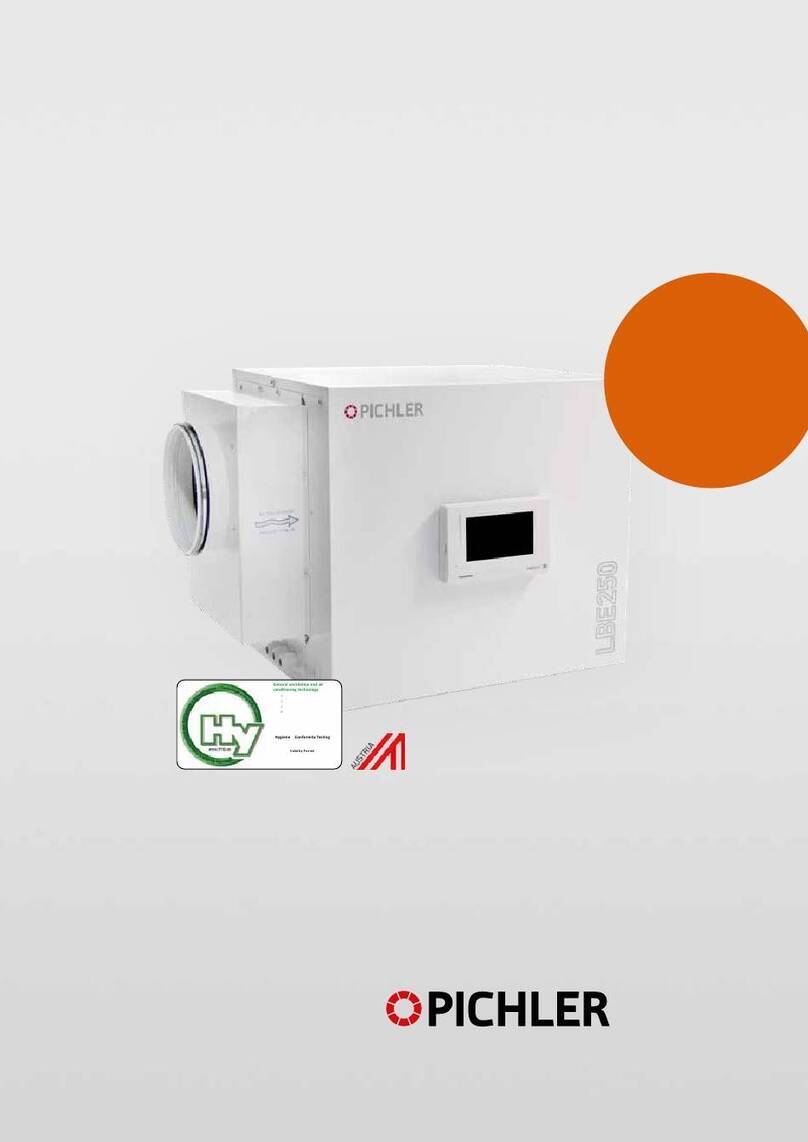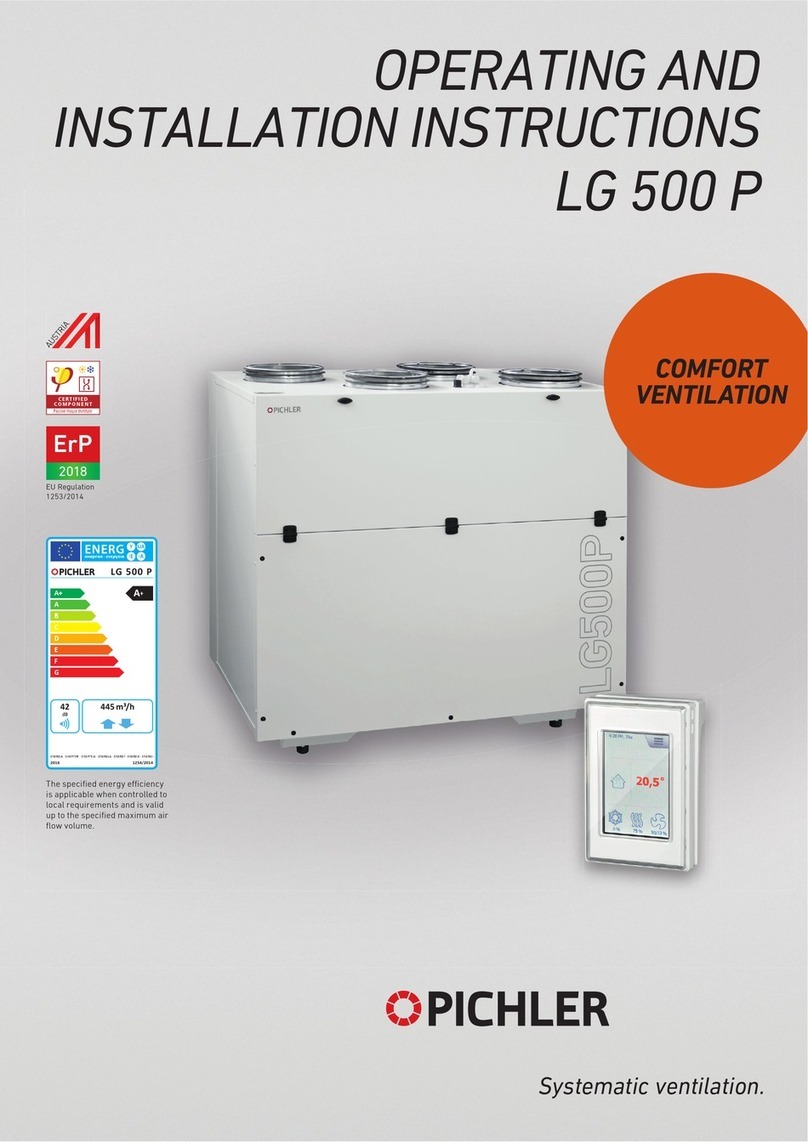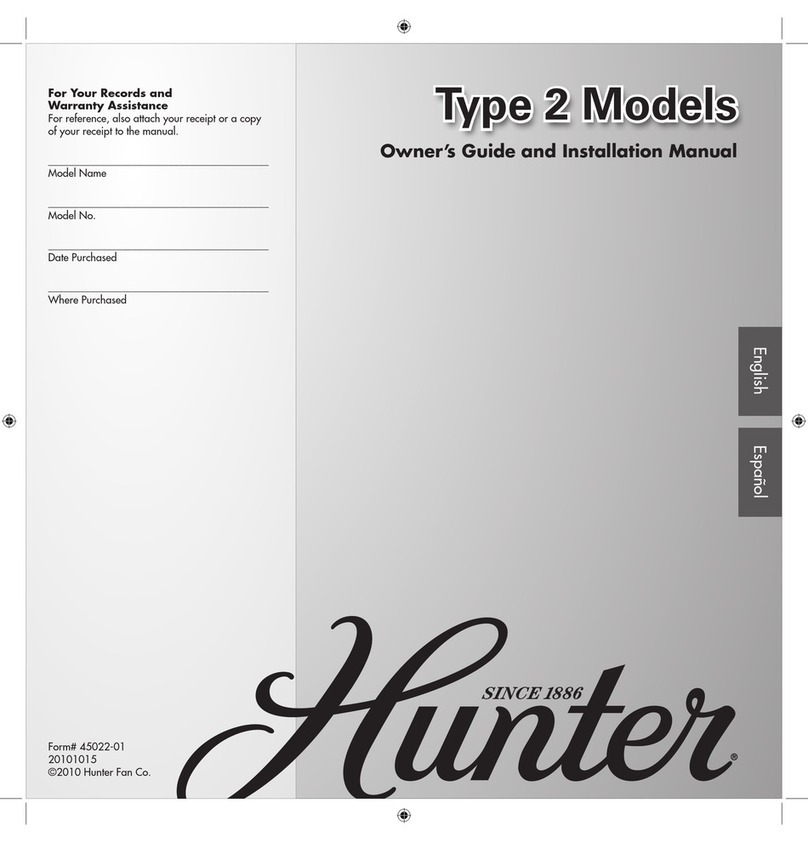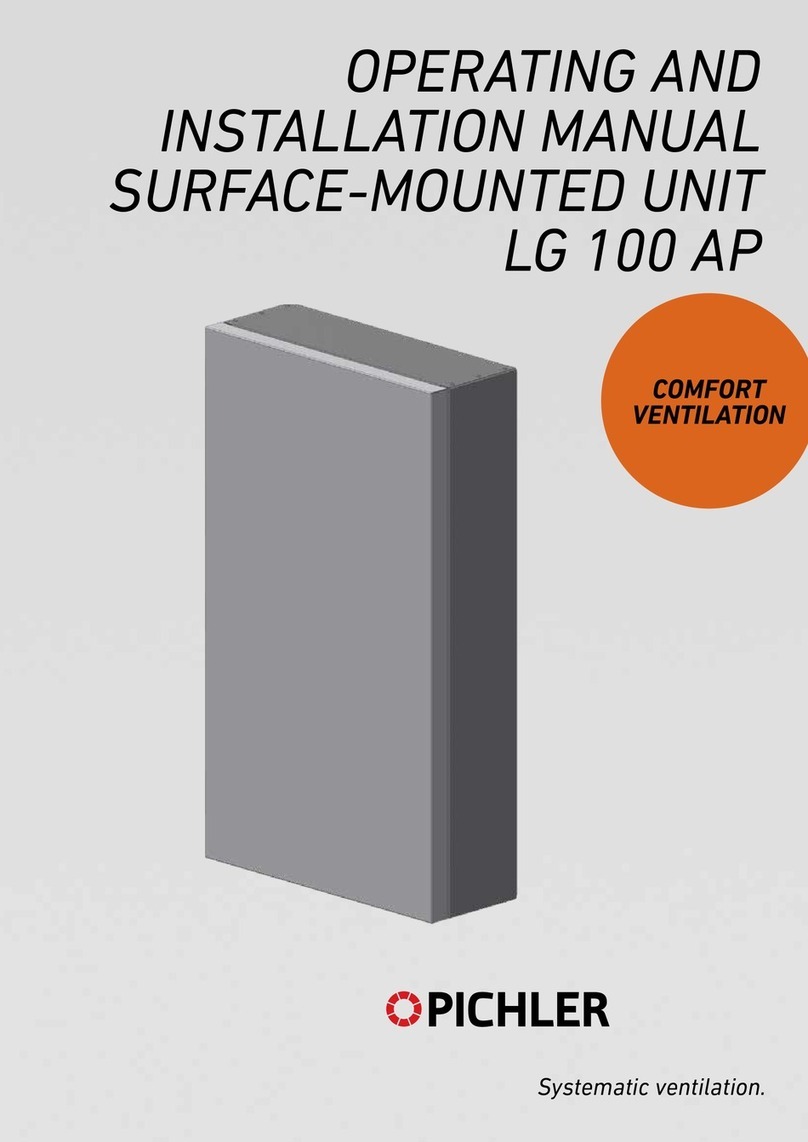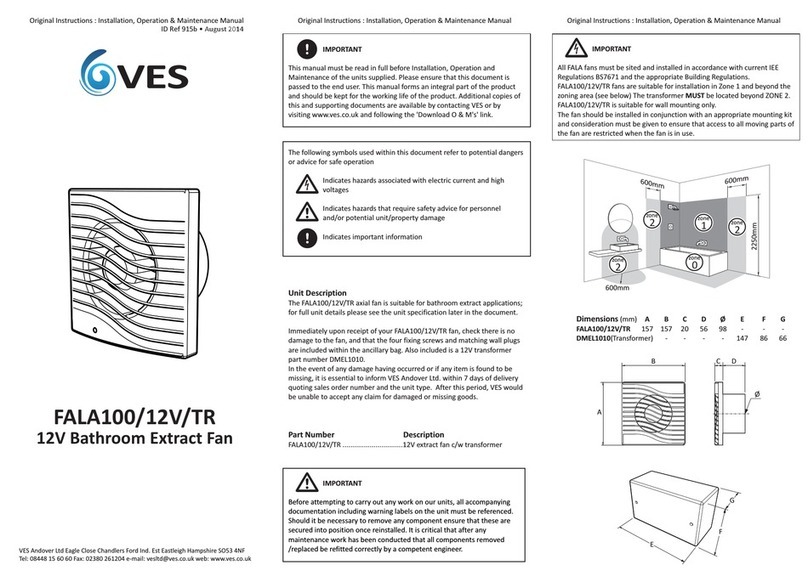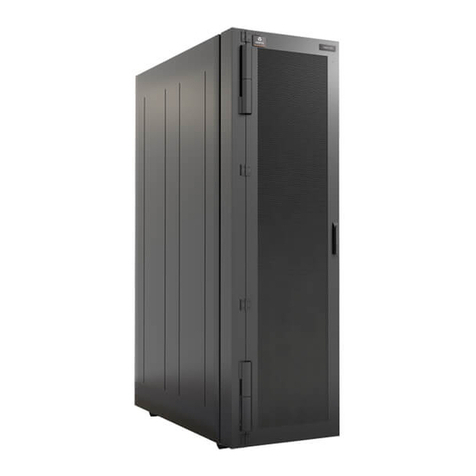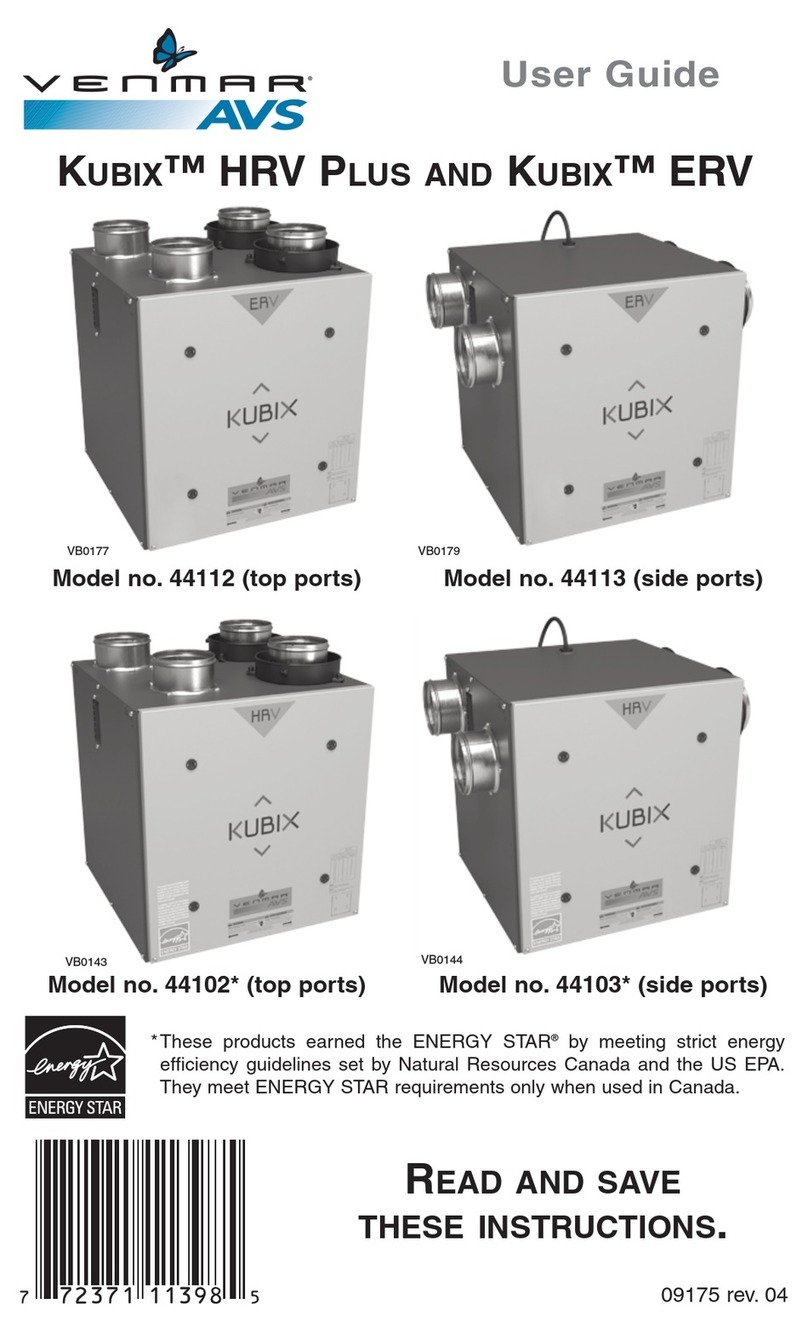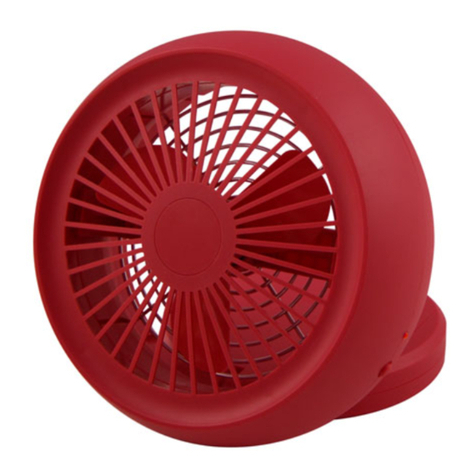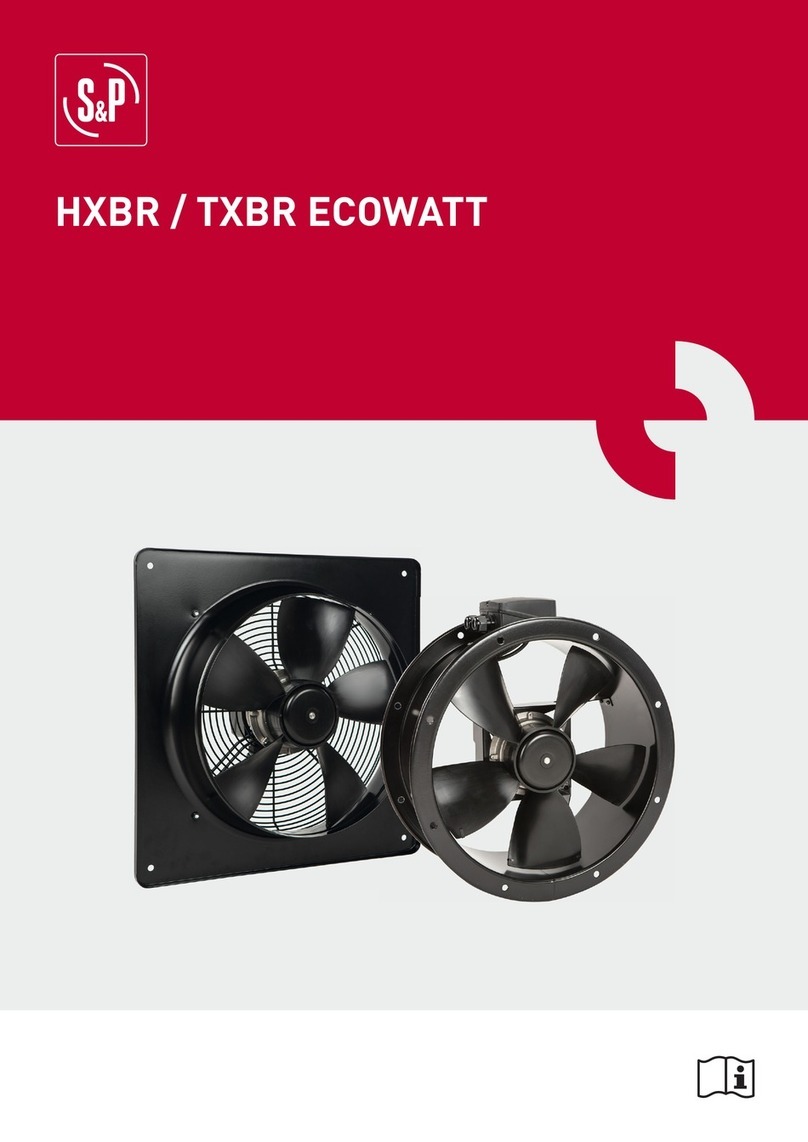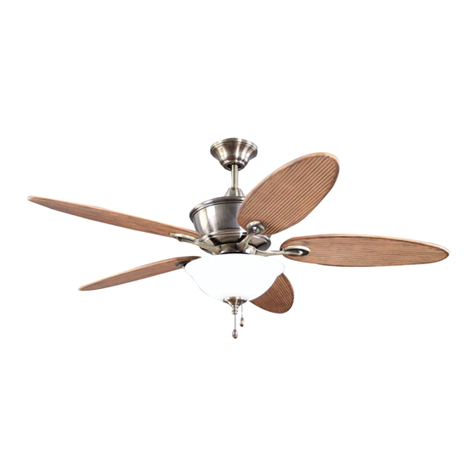
OPERATING AND INSTALLATION MANUAL FLUSH-MOUNTED UNIT LG 100 UP PAGE 10
Changes reserved
The compact ventilation unit is not a ready-to-use product. It must not be put into operation until it has been properly installed and
connected. Only qualified and instructed personnel may carry out connection and service work on the unit.
B
In order to prevent uncontrolled condensate formation in the unit, continuous operation at outdoor temperatures
below 0°C with an extract humidity of more than 60% must be avoided (e.g. private spa area).
B
Persons transporting, installing or working on the unit must have read and understood the operating instructions, in
particular Section5 "Safety". The end user must also be instructed on potential hazards.
4.1.1. STIPULATIONS FOR OPERATION WITH FIREPLACES
4.1.2. STIPULATIONS FOR OPERATION WITH EXTRACTOR HOODS
4.1.3. LIABILITY
Local requirements must be taken into consideration by compliance with corresponding standards, laws and directives.
The decentralised compact ventilation unit LG100 may only be installed in rooms, flats or utilisation units of a comparable size in
which fireplaces dependent on room air are installed, if:
• simultaneous operation of room air-dependent fireplaces and the air extraction unit is prevented by safety devices, or
• the flue gas evacuation of the room air-dependent fireplace is monitored by special safety devices. In the case of room-air
dependent fireplaces for liquid or gaseous fuels, activation of the safety device must lead to the switch-o of the fireplace or
ventilation unit. In the case of room-air dependent fireplaces for solid fuels, activation of the safety device must lead to the switch-o
of the ventilation unit.
The ventilation units for the controlled aeration and ventilation of a flat or a comparable living unit must not be installed if room
air-dependent fireplaces in the living unit are connected to exhaust gas systems, which themselves have multiple connections.
Normal operation of the ventilation systems requires the possibility of shutting potentially available combustion air ducts as well as
exhaust gas systems o from room air-dependent fireplaces. In the case of exhaust gas systems of fireplaces for solid fuels, it must
be ensured that the shut-o device can only be operated manually. The position of the shut-o device must be identifiable by the
setting of the operating handle. This specification is considered as complied with if a shut-o device against soot is used.
Fire protection requirement: With regard to the fire protection installation regulations for the set-up of the ventilation unit, the
provisions of national law, in particular the building regulation concerning the fire protection requirements with regard to ventilation
systems in the relevant latest version must be observed.
Due to the heavy load as well as the irregular operation, the extract air of an existing kitchen extractor hood must not be integrated
into the dwelling's ventilation system. Extract air from such extractor hoods must be conducted separately by means of an exhaust
air pipe via the roof. The supply air must be provided for separately (e.g. by window ventilation).
If an extractor hood without the separate provision of supply air is operated, the balance of the air volume in the dwelling is no longer
provided for and the proper function of the dwelling's ventilation system is no longer ensured (odour diversion, etc.). Another option is
to operate the extractor hood in recirculation mode.
The compact ventilation unit LG 100 has been developed and manufactured for controlled mechanical ventilation and deaeration of
spaces with purposes similar, for example, to seminar rooms and small oces. Proper use of the ventilation systems have the facility
to be shut o from fireplaces dependent on ambient air.
Any other use than the one described in Section4 shall be deemed improper and may cause personal injury or damage to the
compact ventilation unit, for which the manufacturer shall accept no liability.
USERS GENERALSPECIALIST PERSONNEL
